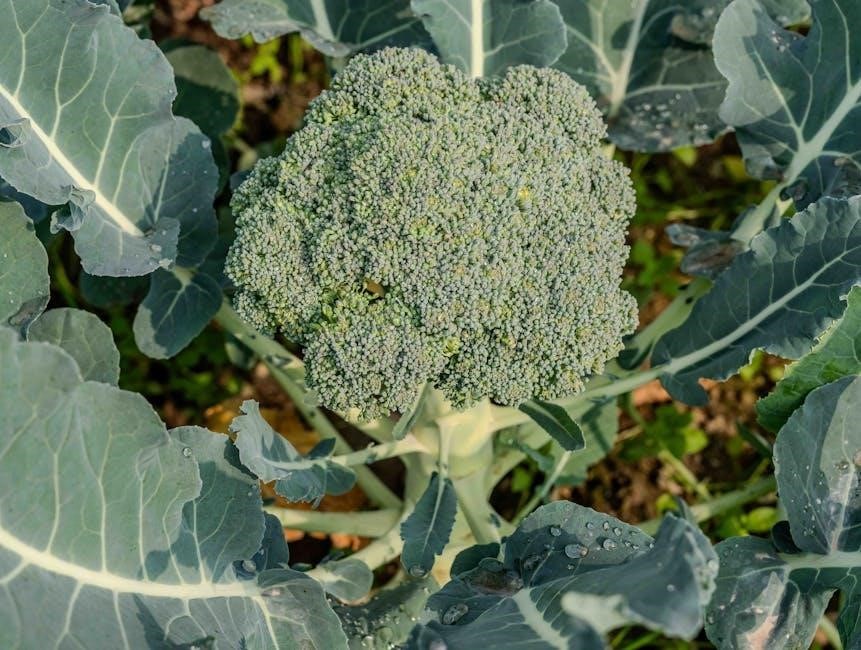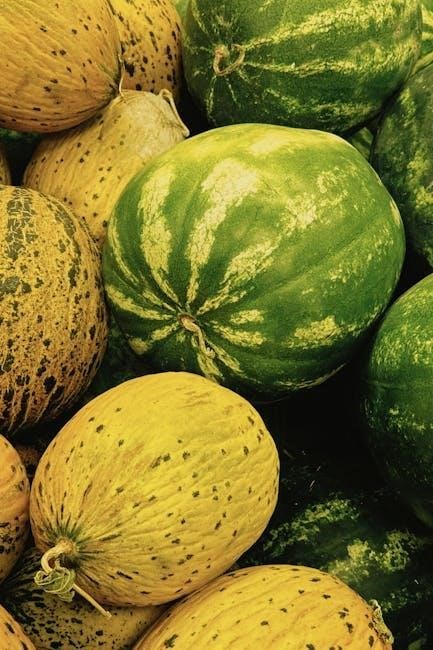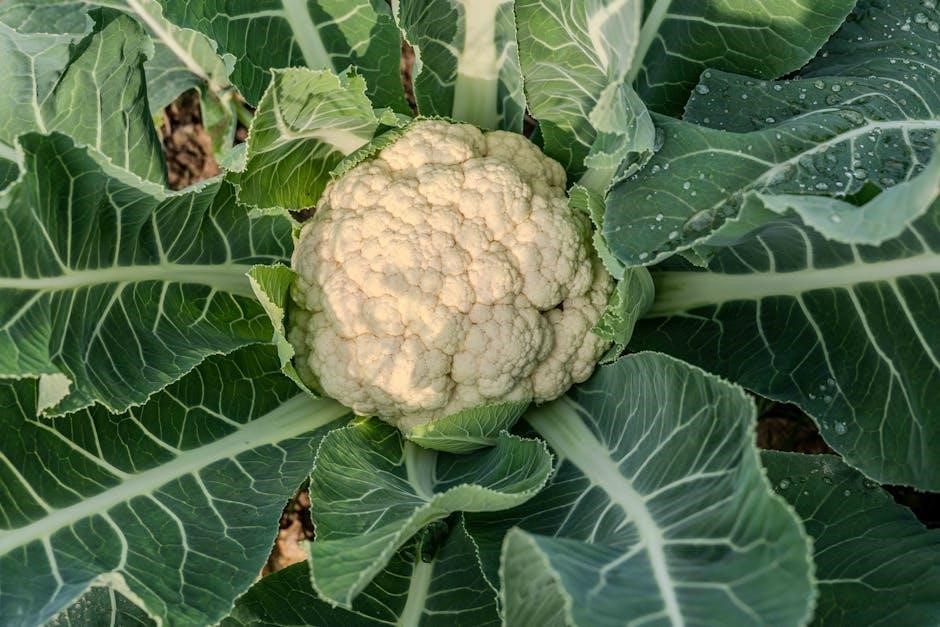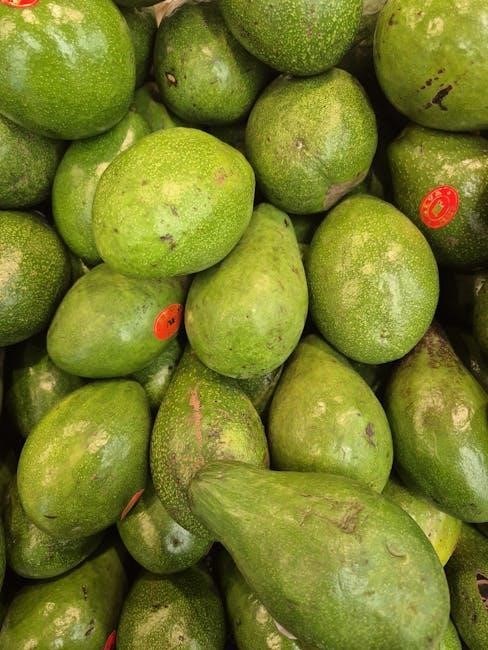Azteca nutrition emphasizes whole, nutrient-rich foods like corn, beans, squash, and chili peppers, forming a balanced diet that fueled the Aztec civilization’s active lifestyle and cultural prosperity.
Overview of Aztec Dietary Practices
The Aztecs followed a diet rich in diverse, locally sourced foods, emphasizing corn, beans, squash, and chili peppers. Their meals were simple, with minimal use of animal products, as domesticated animals like cows and sheep were absent. Instead, they relied on fish, turkeys, and insects for protein. Dietary practices were deeply intertwined with agriculture and religious beliefs, ensuring sustainability. Meals were balanced to provide essential nutrients, reflecting a sophisticated understanding of nutrition. This approach not only sustained their population but also supported their active, labor-intensive lifestyle, showcasing a harmonious relationship between their diet, environment, and culture.
Importance of Nutrition in Aztec Culture
Nutrition held a sacred place in Aztec culture, viewed as essential for maintaining physical health, spiritual vitality, and societal order. The Aztecs believed that a balanced diet connected individuals to their gods and ensured the prosperity of their civilization. Proper nutrition was seen as a moral duty, with meals prepared in ways that honored their deities. The ruling class promoted agricultural practices that maximized nutritional value, ensuring everyone had access to wholesome foods. This holistic approach to diet was central to their belief in a harmonious universe, where physical well-being mirrored the balance of nature and divine will, fostering a strong, resilient community capable of thriving in their challenging environment.

Staple Foods in the Aztec Diet
Aztecs relied on corn, beans, squash, and chili peppers as their dietary cornerstones, supplemented by wild game and fish, creating a diverse and nutritious foundation for daily meals.

Corn (Maize) as a Primary Food Source
Corn, or maize, was the cornerstone of the Aztec diet, serving as their most cultivated and consumed crop. It was versatile, used to make tortillas, tamales, and a milky drink called atole. Corn provided essential carbohydrates, fiber, and nutrients, sustaining the population. The Aztecs revered corn as a gift from the gods, symbolizing life and fertility. Its cultivation was central to their agriculture, often grown alongside beans and squash in the “Three Sisters” farming tradition. This practice enhanced soil fertility and ensured a balanced diet. Corn’s nutritional and cultural significance made it indispensable, shaping both daily meals and religious ceremonies in Aztec society.
Beans and Squash: The “Three Sisters” Farming Tradition
Beans and squash were integral to the Aztec diet, often cultivated alongside corn in the “Three Sisters” farming tradition. This method promoted soil fertility and efficient land use. Beans provided essential protein and fiber, while squash offered vitamins and minerals. The large leaves of squash plants shaded the soil, preventing weed growth and retaining moisture, benefiting both beans and corn. This symbiotic farming practice ensured a balanced and nutritious diet, reflecting the Aztecs’ deep understanding of agriculture and nutrition. The combination of these crops not only sustained the population but also symbolized harmony with nature and community well-being.
Chili Peppers and Their Role in Aztec Cuisine
Chili peppers were a cornerstone of Aztec cuisine, adding flavor and heat to various dishes. They were used to season sauces, soups, and meats, enhancing the overall dining experience. Beyond taste, chili peppers held cultural significance, often featured in religious rituals and ceremonies. Their spicy heat was believed to purify and energize the body. Rich in vitamins and antioxidants, chili peppers also provided essential nutrients, making them a vital component of the Aztec diet. This versatile ingredient not only added vibrancy to meals but also reflected the Aztecs’ deep connection to their natural resources and culinary traditions.

Protein Sources in Aztec Nutrition
Aztecs relied on turkeys, ducks, and fish as primary protein sources. They also hunted small game and utilized aquatic resources like frogs and insects for sustenance.

Turkeys and Other Domesticated Animals
Turkeys were a cornerstone of Aztec protein sources, raised for their meat, eggs, and feathers. Other domesticated animals included ducks, dogs, and, occasionally, quail. These animals were valued not only for their nutritional contributions but also for their roles in rituals and ceremonies. The Aztecs practiced sustainable farming, ensuring that their livestock thrived alongside crops, creating a balanced ecosystem. Domesticated animals provided essential protein, particularly in regions where access to larger game was limited. This reliance on poultry and small animals reflected the Aztecs’ resourcefulness and their ability to adapt their diet to available resources, ensuring a steady supply of nutritious food for their communities.
Fish and Aquatic Resources
Fish and aquatic resources played a significant role in the Aztec diet, particularly for those living near water sources like Lake Texcoco. The Aztecs utilized fish, frogs, and other aquatic organisms as vital protein sources. They employed advanced fishing techniques, including nets and hooks, to harvest these resources sustainably. Aquatic foods were not only a dietary staple but also held cultural importance, often featured in rituals and ceremonies. For communities without access to large domesticated animals, fish provided essential nutrients, ensuring a balanced and nutritious diet. The Aztecs also preserved fish through smoking and salting, allowing for year-round consumption. This reliance on aquatic resources highlights their adaptability and resourcefulness in utilizing their environment effectively.

Traditional Aztec Dishes
Aztecs enjoyed a variety of traditional dishes, including tamales, atole, and pozole, showcasing their culinary creativity and reliance on staple ingredients like corn, beans, and chili peppers.
Sopa Azteca (Tortilla Soup)
Sopa Azteca, or Tortilla Soup, is a traditional Aztec dish made with a rich tomato-chile broth, crispy tortilla strips, and various toppings such as avocado, cheese, and fresh cilantro. This hearty soup reflects the resourcefulness of Aztec cuisine, utilizing readily available ingredients like corn tortillas, chilies, and fresh vegetables. The broth is seasoned with aromatic spices, creating a flavorful base that is both nourishing and delicious. Sopa Azteca remains a beloved dish today, often served at family gatherings and celebrations, showcasing the enduring legacy of Aztec culinary traditions.

Tamales: A Staple in Aztec Cuisine
Tamales were a cornerstone of Aztec cuisine, made from masa (corn dough) steamed in corn husks. This versatile dish was a dietary staple, offering sustained energy for both daily life and ceremonial occasions. Filled with ingredients like beans, squash, turkey, or chili peppers, tamales provided a balanced mix of nutrients. Their preparation involved soaking corn husks, spreading masa, and carefully steaming them, ensuring a moist and flavorful meal. Rich in complex carbohydrates, fiber, and essential vitamins, tamales were not only nourishing but also deeply rooted in Aztec culture and spirituality, symbolizing unity and abundance. Today, tamales remain a cherished dish, reflecting the enduring legacy of Aztec culinary wisdom and its emphasis on whole, wholesome foods.

Nutritional Benefits of Aztec Foods
Azteca nutrition offers a wealth of vitamins, minerals, and antioxidants, promoting overall health and energy through a balanced mix of whole grains, proteins, and fiber-rich ingredients.
Vitamins and Minerals in Aztec Diets
Aztec diets were rich in essential vitamins and minerals, derived from a variety of whole foods. Corn provided vitamin B and fiber, while beans offered iron and zinc. Squash contributed magnesium, and chili peppers supplied vitamin C and antioxidants. These nutrient-dense foods supported energy, immune function, and overall health, reflecting the Aztecs’ understanding of balanced nutrition.

Modern Applications of Aztec Nutritional Practices
Azteca nutritional practices have influenced modern dietary approaches, emphasizing whole, unprocessed foods. Corn, beans, and squash remain staples in many contemporary diets, promoting a balanced intake of vitamins, minerals, and fiber. The use of chili peppers, rich in antioxidants, aligns with current trends toward anti-inflammatory diets. Plant-based eating, a cornerstone of Aztec nutrition, is now widely recognized for its health benefits. These practices are increasingly integrated into modern cuisine, offering sustainable and nutritious options for today’s health-conscious individuals.

Leave a Reply